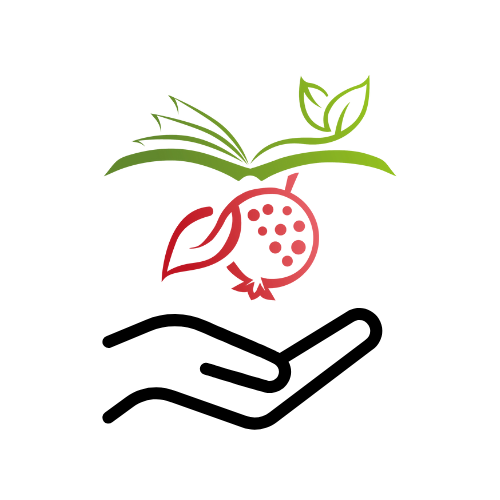
If you think you don’t have a green thumb, don’t fret - herbs are easy to grow!
You only need a piece of land or some planting pots, and herbs are good to go. Populate your garden with some easy herbs to grow! And why not?
There’s such a satisfaction in knowing where you food comes from and how it’s handled. If you’re a beginner, you probably don’t want to try to grow something to complicated.
Even though not all herbs are created equal, many of them are pretty tough and easy to grow..
Let’s talk about these 11 easy herbs to grow, how to keep them healthy, and what you can actually do with these herbs.
Why You Should Grow Your Own Herbs
The question is, why not?
When you have herbs easily accessible in your garden, you no longer need to run to the store to buy them when you need to make pesto pasta or other grain dishes, or you want to flavor your meats, or you’re in the mood for lemongrass iced tea.
You can even use herbs as a natural medicine!
And another thing, you can be sure where exactly your herbs are coming from.
Some herbs you buy in stores are infused with chemicals and fertilizers, which your body is most definitely better without.
You can grow an organic herb garden and get all the benefits minus the nasty chemicals.
Plus, herb gardening is fun!
Don’t you just love the feeling of growing something and actually using it in your recipes? Taking these little gifts from God and being able to enjoy them is an amazing feeling. Herb gardening is a therapeutic and wholesome way to spend your time and energy too.
You can even encourage the whole family to join in and turn this into a weekend family activity instead of soaking up nasty radiation from your electronic devices.
Gardening is fun, enjoyable, and good for your mental, physical and psychological health.
And with herbs being quite easy to grow, it’s not too hard to get started!
Benefits of Herbs
Whether you like pizza or pasta or stews, your meals can definitely have a much better flavor and aroma with the right herbs.
You can even make refreshing drinks with herbs without making them taste…. Herb-y.
But apart from the flavor and aroma-enhancing benefits of herbs, there’s something more that they are good for.
Herbs also have amazing health benefits. That’s why most are called medicinal herbs that heal. Check that out because those are probably already in your kitchen, however growing your own is much better for your health.
Sage, for instance, helps boost your memory and your cognitive function.
Basil increases your immunity and supplements your body with what it needs to fight infections naturally.
Then, there’s rosemary that is good for nasal congestion and suppression of allergic responses.
So they make your food taste better and they are good for your body, overall. Now you have more reasons to eat AND grow herbs in your garden!
Tips for Growing Herbs
Herbs are fun and easy to grow.
But there are some tips and tricks to keep in mind to make sure they really thrive.
1. Buy Organic Seeds

If you choose to grow herbs from seeds, opt for organic sources. You can even find heirloom varieties that grow best in your climate.
You Need Good Quality Seeds
Remember - good seeds turn into good plants. And vice-versa.
So if you want to make sure you have great quality herbs in your garden, you need to choose your seeds carefully to be certain that the source is actually of good quality.
2. Proper Placement of your Herbs
Herbs that are grown in containers need to be placed in the right area in your yard to make sure they thrive.
How Much Sunlight and Water?
Determine the amount of sunlight and water your herbs need and keep that in mind when positioning them in your yard.
Also, consider the spacing, if you plant them straight into the ground. Allot some spaces in between each herb, so their roots can expand and will not restrict their growth.
3. Apply Proper Practices to Help Your Herbs Thrive

With good quality soil, the proper amount of sunlight and shade, as well as excellent watering habits, will help to ensure your herbs grow well.
Implement Proper Care Techniques
You should also trim your herbs when needed such as the mint, to prevent them from growing too long or becoming leggy or becoming invasive.
Proper maintenance is essential to ensure the growth and development of your herbs and make sure they will live longer and give you the maximum health benefits your body needs.
11 Best and Easiest Herbs You Can Grow in Your Yard
Now that you know the basics on how to grow herbs, let’s proceed to the best and easiest herbs to grow in your yard today…
You’ll feel like an accomplished gardener even if you think you don’t have a green thumb!
1. Mint
Whether you opt for peppermint or spearmint, either grows quickly and easily.
These perennial herbs come from the Lamiaceae family, and they’re also kind of invasive and tends to choke out and invade other herbs in your garden if not kept trimmed back. So, just keep your eye on them.
If you don’t have a wide space for this herb you can grow them up a trellis. Vertical growing is a great way to save space! It is also good as an indoor herb that will grow well in the shade, as long as it receives some light daily.
2. Lemongrass

This perennial from the grass family is actually not something you need to plant in the soil.
In fact, you just have to buy a stalk at the market, preferably one with lots of stem with a base kept intact.
Simply trim off the top and place your lemongrass stalk in a jar with about two inches of water.
In a few days, this stalk will grow roots and eventually produce new shoots.
3. Oregano
Unlike mint, oregano does not invade or spread aggressively. They do still spread. Which, may be really nice to fill out your containers or garden areas.
This perennial herb comes from the mint family. No wonder it smells amazing just like mint!
If you want a variety that has more flavor and aroma, go for the Greek variety. It’s a great herb to use for your pizza or pasta. I also have a Black Bean Burger recipe that uses oregano to make it even more robust!
4. Parsley
An easy herb to grow from the Umbellifers family, parsley won’t give you much of a hard time at all.
I suggest that you grow this biennial herb from clippings or buy a grown plant and keep in the sun. They also grow just fine in partial shade.
Growing it from seeds takes time to germinate, about two weeks.
At first, it grows slowly, but once you start pruning the stems this plant can really sprout up. If it gets too hot, this plant is known to bolt. But, if you’d like you can harvest the seeds it produces and use them as heirlooms.
Once you have your parsley growing in your garden, you can easily get a bunch and use it for a yummy and nutritious Quinoa salad recipe, Italian dishes, and even parsley tea!
Check out the video below to find out how parsley tea can give you an energy boost that’s good enough to replace your coffee!
5. Rosemary
Rosemary is a perennial that likes less water, so be sure to keep it dry (but not too dry). Just like other varieties in the Mint family, rosemary needs to have the water drained but without depriving the plant of water.
Choose the upright variety of rosemary such as the Blue Spire or Tuscan Blue that remains compact and perfect for indoor gardening.
Another thing - even not so rich soil is okay for rosemary, it’s pretty hardy!
6. Basil
Another one of my favorite and easy herbs to grow is basil.
This is an annual plant, although some varieties are perennial. It is a member of the Mint family.
It is really great-tasting and excellent for making pesto sauce or as a topping to your pizza.
You will love that it also does well when grown indoors. Try different varities such as the African Blue and Spicy Globe varieties.
Thai Basil is another good variety that smells heavenly and tastes spectacular in your dishes.
7. Sage
Sage can be quite an expansive herb like mint. No wonder - it’s a perennial from the Mint family!
If you want to prevent it from expanding too much, you can simply cut it back to control it.
To use sage, you can add in some sage leaves to your cooking water and olive oil as you cook your white beans. There are several other things to do with sage whether you like to cook it or not.
8. Chives
Chives are perennials from the Amaryllidaceae family, and they can grow best as an established plant.
Simply pull a bunch up from a grown plant with the roots intact, then place it in a pot with just half-full soil. Add more potting soil to cover its roots up to the crown, and then cut a third of the growth to stimulate more shoots.
9. Thyme

Another perennial from the Mint family, thyme is a suitable herb to plant if you are looking for something not so delicate to grow in your yard.
In fact, if you live in a place that receives a TON of sunlight, thyme will definitely thrive there!
This herb requires 6 to 8 hours of full sun, sometimes even supplemental light.
Lemon thyme is a good variety, and it has that nice, citrus flavor and quite rare. But the taste is definitely amazing!
10. Cilantro
Now, don’t confuse this plant with parsley, they look very similar.
This member of the Umbelliferae family is a perennial while parsley is a biennial.
It is easy to interchange the two, but a good sniff will tell you which is which.
I would plant cilantro from seeds and then once ready to harvest, I use it to make tasty guacamole and my favorite pumpkin hummus!
11. Tarragon
Last but not least, we have tarragon.
It is a perennial from the sunflower family, and it is quite easy to grow, actually.
It’s got kind of a pungent flavor to it but it’s an excellent addition to your salads and sauces.
Do you like herbal tea?
Well, tarragon is a great addition for that, too!
Start from Seeds or Buy as Plants?

If you prefer to grow your herbs as an indoor plant, you need to make sure you buy them from a store that has been treating them as indoor plants and not outdoor plants.
Herbs that have been growing and thriving outside will experience a bit of shock from such a dramatic shift in lighting.
Some herbs as best grown as seeds such as cilantro while others are best as established plants as parsley, mint, sage, and oregano.
How to Store Your Fresh Herbs
Now, if you have bought some herbs, you want to make sure you store them properly to prevent them from going bad easily, here are ways to do it:
1. Freezing
If you want to store herbs such as lemon balm, tarragon, mint, basil, and chives, the best way to prolong their shelf life is by freezing. You can use a similar proportion of frozen herbs as with fresh ones in your dishes.
To freeze, simply remove the stems and arrange the leaves in one layer, nice and neat, on a baking pan or a cookie sheet.
Another option is to put the leaves in a freezer bag. Be sure to label and add the date to make sure you know how old these herbs are in your freezer.
You can also freeze your herbs in an ice cube tray and mixed with water. This is a good idea when you are planning on using your herbs later than sooner. Keep the water halfway full then place the herbs in.
This option makes it easy for you to use the desired amount of herb for your soups, stocks, or stews.
2. Refrigeration

Refrigeration is another method of storing herbs.
To do this, simply cut off the stems to make them a little shorter and dry the leaves completely. If you have just bought them at the store, don’t rinse them unless you are ready to use them.
Fill up a glass with water and place the ends of the stems into the jar with water and keep them in the fridge.
When stored in this manner, you should be able to store your fresh herbs for 2 weeks or more. This is the case with basil, cilantro, and parsley.
3. Dehydration
If you want to store your herbs longer, why not dehydrate them?
You can use the sun (the most natural way to do it) or dry them up by simply hanging the bunch of herbs upside down in a dry and warm area but not in direct sunlight.
In a couple of weeks or so, your herbs should be dry. At this point, you can remove the leaves from the stems. This works best with lavender.
Tips for Dehydrating Herbs
Another way to do it is by using your dehydrator or your oven. A simple dehydrator should work great or you can dry the herbs in your oven at about 180 to 200 degrees. Just be sure not to burn your herbs!
Great herbs to dehydrate include lemon verbena, mint, raspberry leaves, rose petals, and pineapple sage leaves.
My favorite dehydrator that I also use to dehydrate fruits with is the Filter Pro Dehydrator. Check that out if you're interested!
Conclusion
With the changing season and weather, it is always good to have a nice supply of fresh herbs any time of the year.
So be sure to grow these herbs in your garden, so you can have access to tasty dishes that are enhanced by these flavorful, aromatic, and nutritious herbs.
If you’ve got some questions about herb gardening, shoot me a message in the comments, and I’ll share with you more tips. Catch you in the next one!





